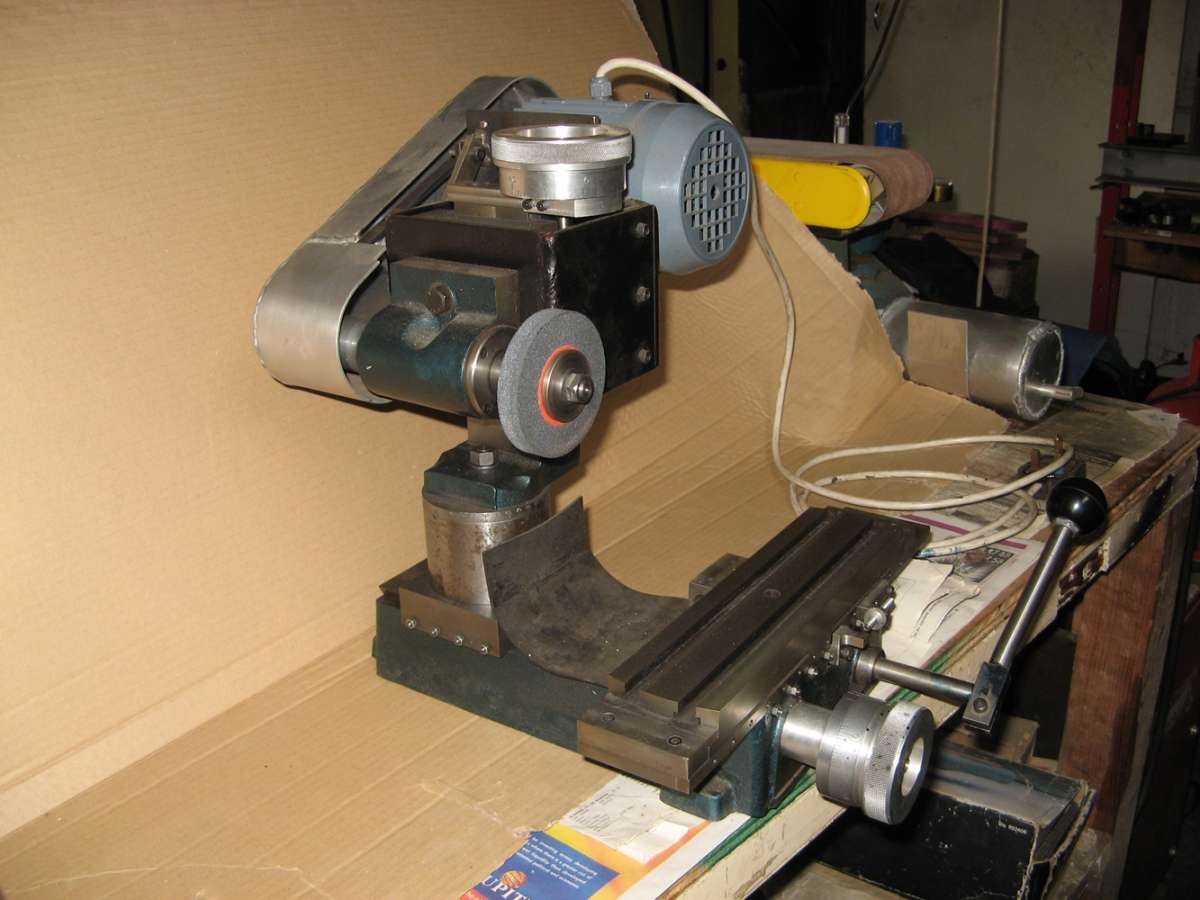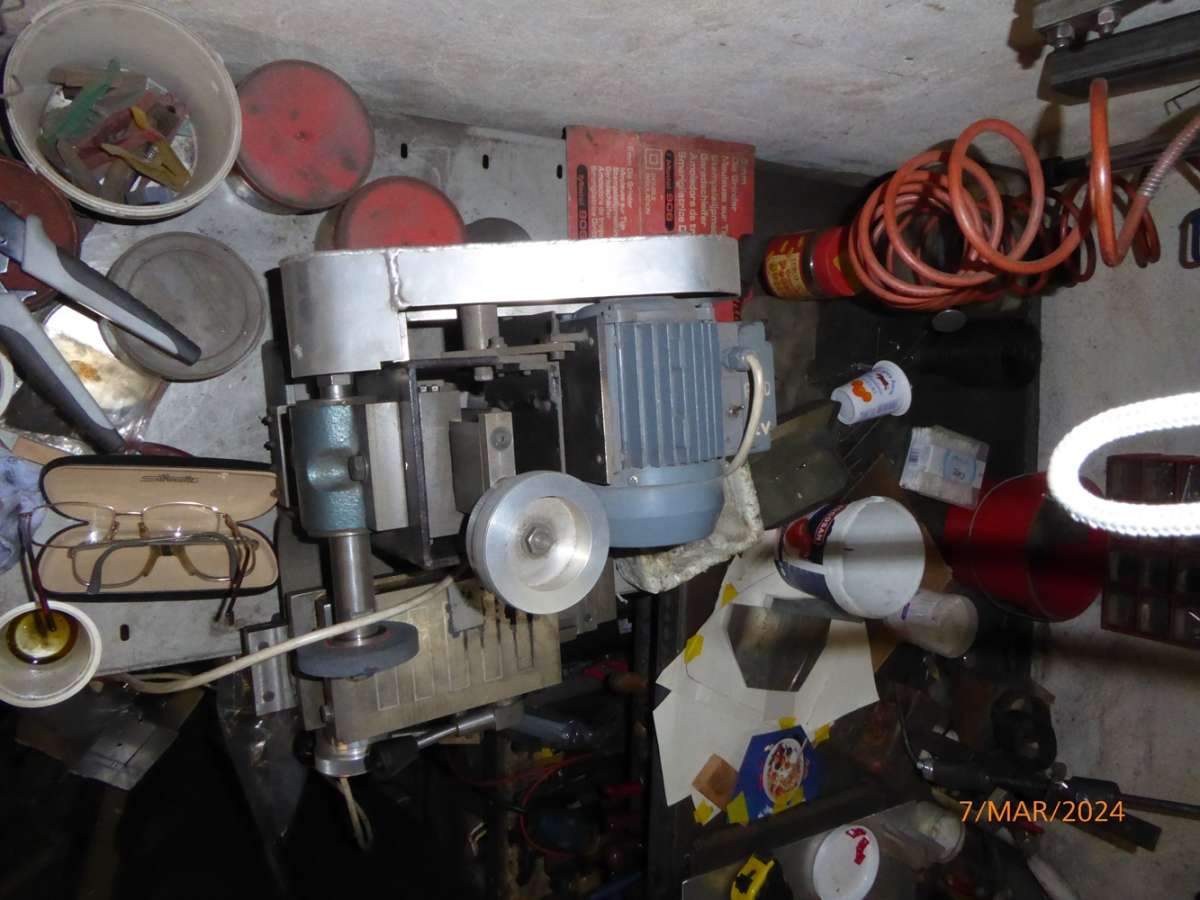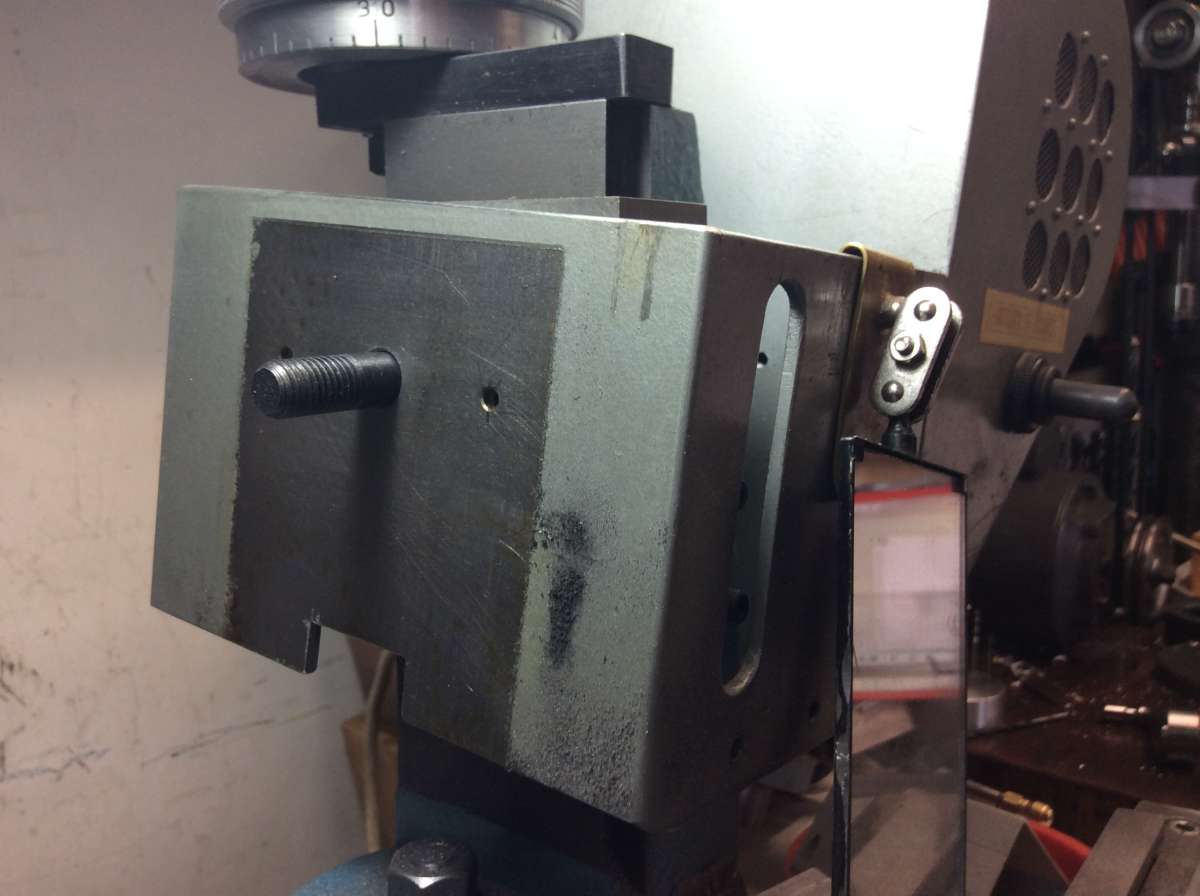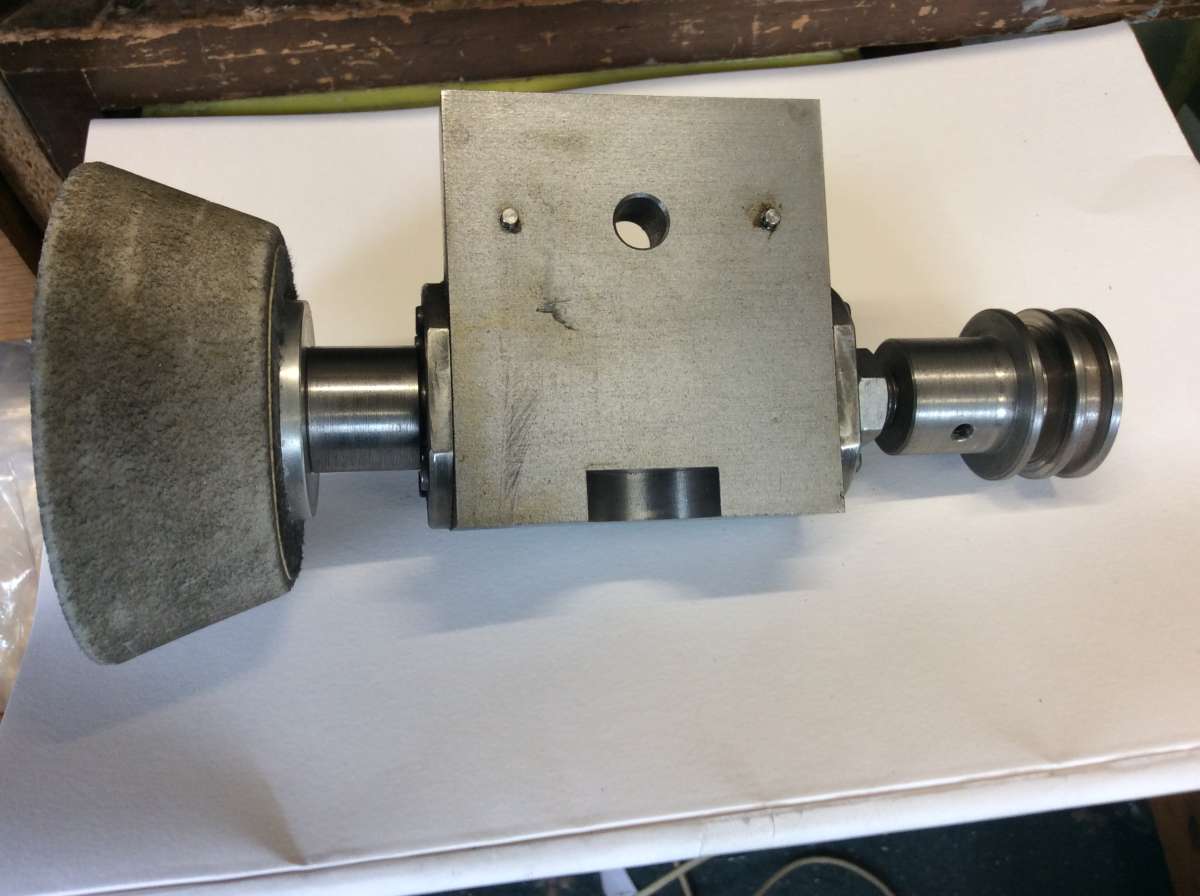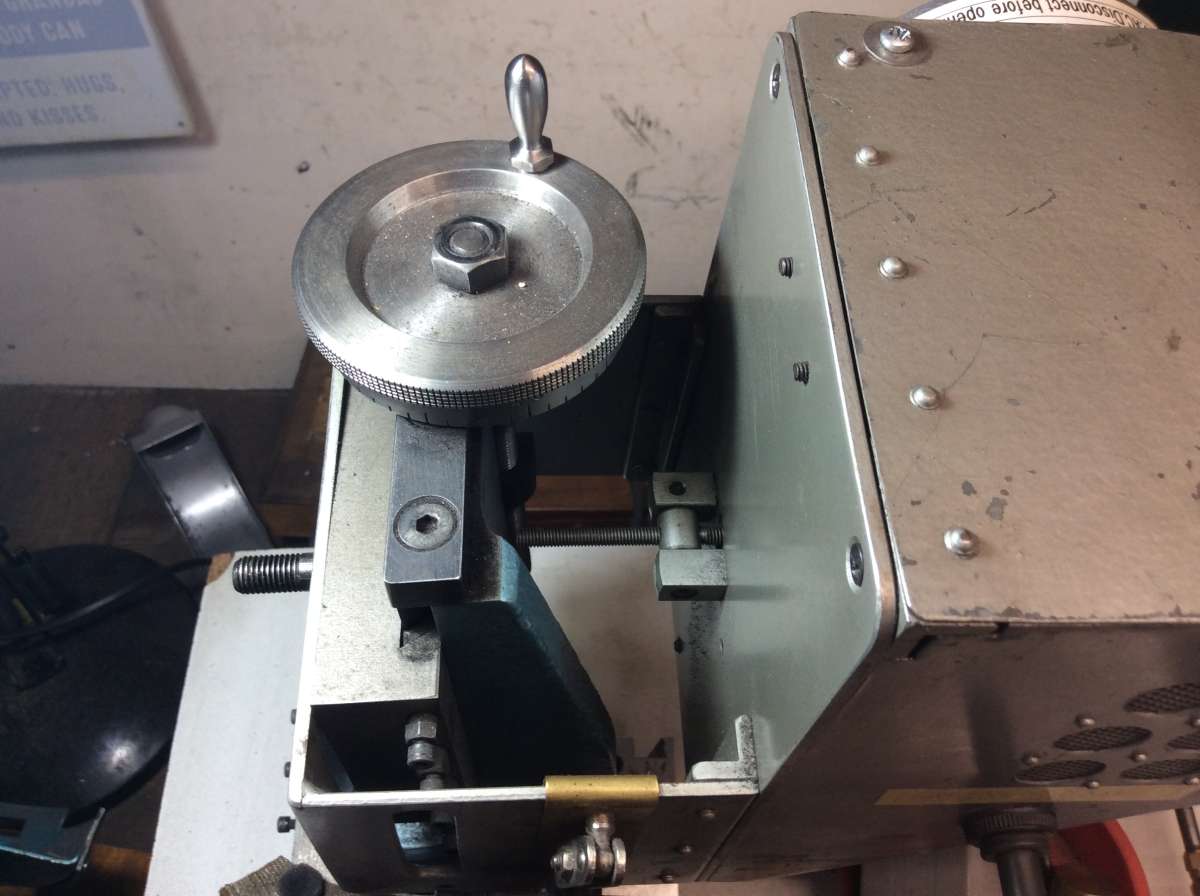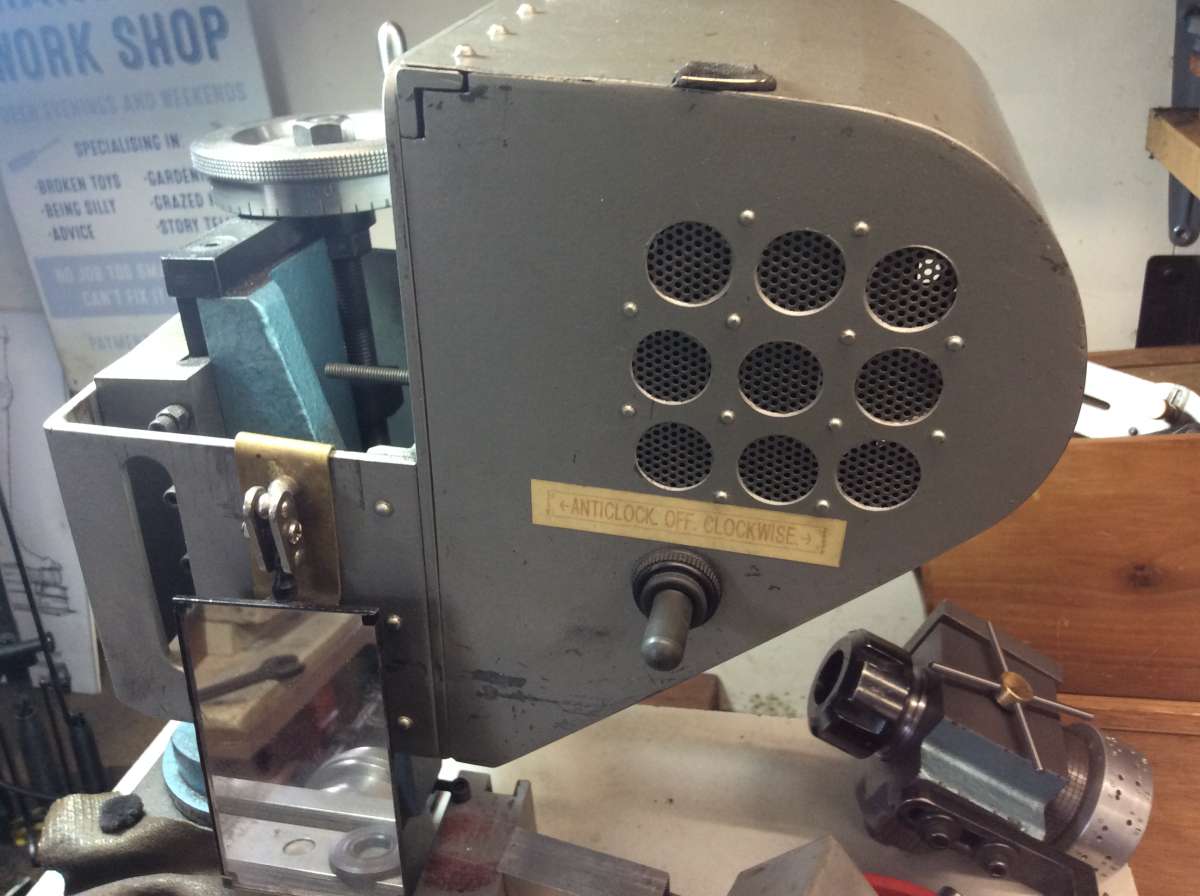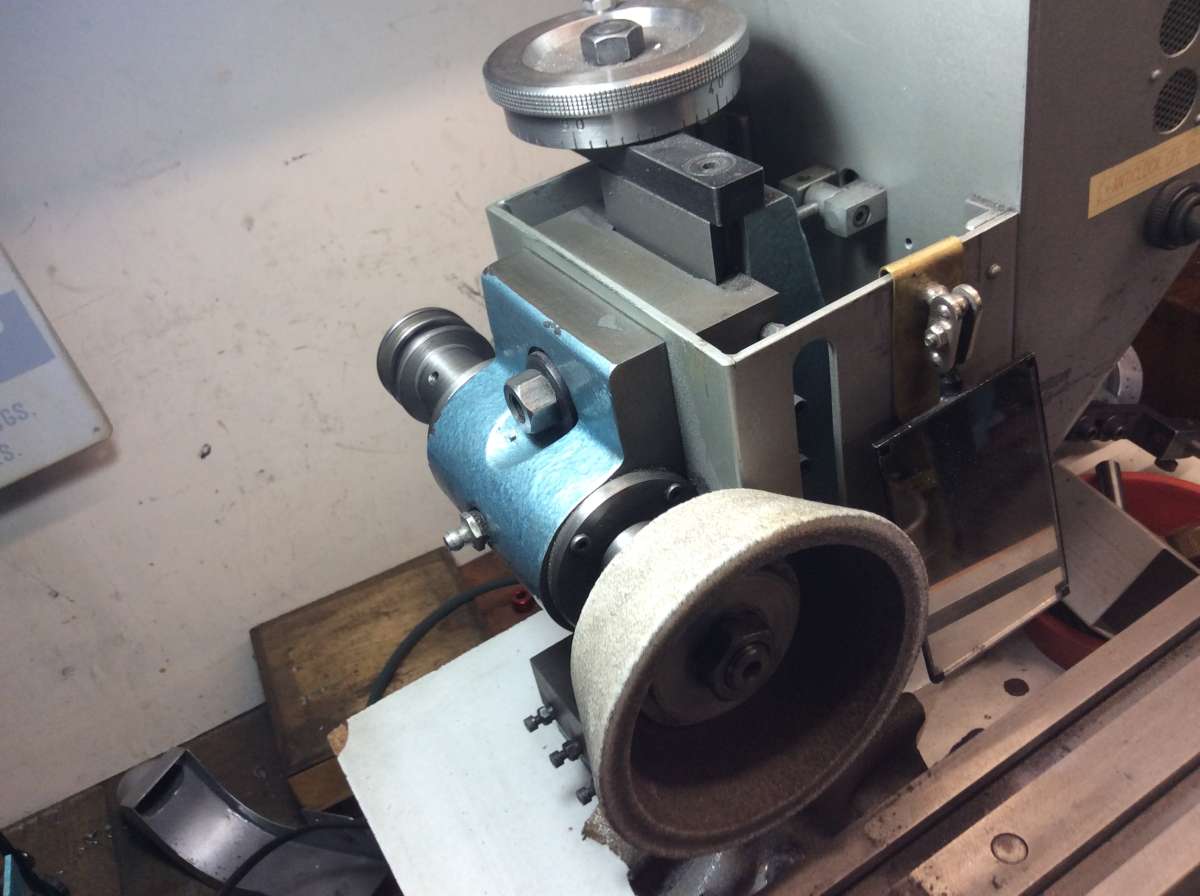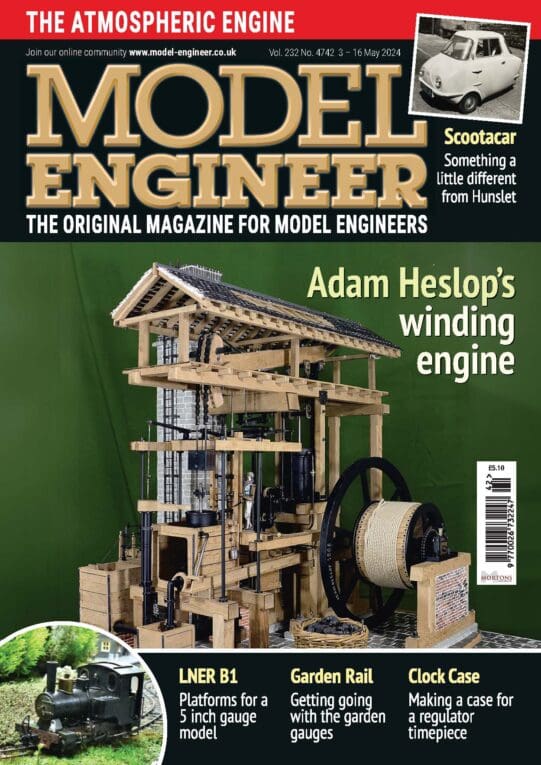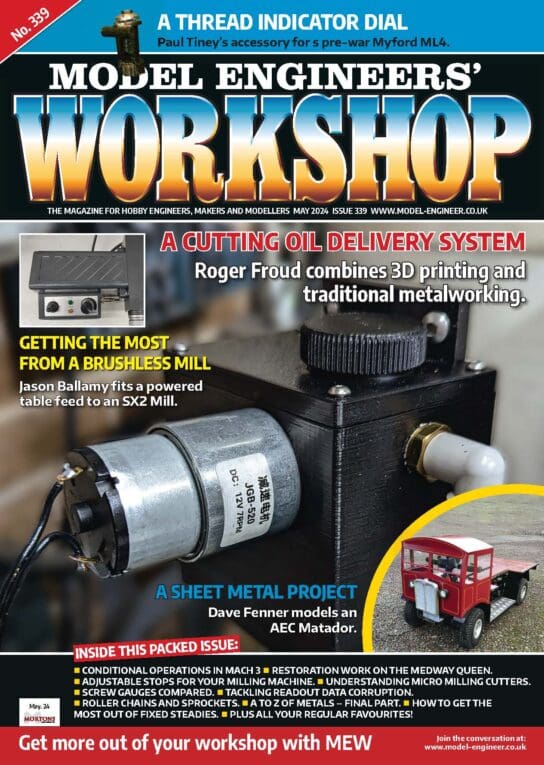I am presently engaged in completing a ‘Stent’ Tool-&-Cutter Grinder and have been preparing some new detail-drawings from the Blackgates-published drawings. I do not have any original text for this project – I bought it unfinished from a club-member who’d decided to go all-carbide. (Wealthy ‘erbert!)
In preparing some decimal copies of the remaining details, the more I studied my now-fragile, yellowing copies the more puzzled I became.
Quite a lot of these machines have been built, successfully too, and I have a copy of Model Engineer’s Workshop ((No. 108, Aug/Sep 2005) that shows a basic but major improvement by putting the wheel inboard of the column, nearer the table centre.
Nevertheless, parts of the General Arrangement drawings are vague and there seem some peculiar things about the design!
Has anyone built or bought one of these machines so can help me, please?
.
1) The Bearing Housing is designed as 3.00″ wide and hangs by a single 3/8″ diameter stud on a slide that is a full 3/8″ wider.
The stud is well above the axis of the spindle so tilting the unit even a few degrees would move the highest and lowest points of the wheel considerably both horizontally and vertically. There is no degree-scale as is specified on other parts.
There is no positive lock, second stud, rebate, dowel or other means either to set the assembly to tilt angle or to keep it horizontal.
Why the different widths?
Is the angle of the spindle designed to be adjustable out of horizontal, or not? I am not sure why it might, except perhaps for sharpening taps and reamers, but the plans do not suggest any such feature deliberately.
.
2) The GA apparently shows the motor mounting sandwiched between the Bearing Housing and Vertical Slide, sharing that one stud, with no positive way to ensure the motor and wheel spindles are, and stay, parallel.
This assembly invites you accurately to fold 3″ wide X 1/8″ thick steel sheet into a channel 5″ across, and weld lumps of bar to it, without introducing distortions in the “sandwich” that would render the housing / slide alignment very inaccurate and liable to work disastrously loose.
Can this be right? How is all that steelwork and motor held to the slide and/or bearing housing? Whether the spindle is intended to tilt, how do the motor and spindle stay parallel?
.
3) The Bearing Housing places two ball-bearing races in recesses in the casting, with the outer races abutting the bore profile and the inner races held to distance by a spacer the same length as the casting’s inner wall.
That necessitates measuring the distance between two bearings to well within a “thou”, and making the Bearing Spacer to exactly the same length. Any difference could throw very unfair axial strains on the races as the unit is assembled.
So how does one overcome that possibility? Is that inner spacer really necessary? (The axial load in service should be extremely small.)
.
4. The end-covers of the Bearing Housing “may” need cutting back to avoid fouling the Vertical Slide… It says that on the drawing! It will foul, by 1/8″, according to the drawing’s own dimensions. I suspect a mistake worked-round rather than corrected, but these covers hold something more important. Their inner diameter is not related to the shaft diameter. They are not bearings so should not be running fits, but there is a sizeable annular gap at the wheel end. The pulley end holds a bush that can be made to a close but loose fit.
Why this gap? How does one stop grinding dust finding its way inside?
…
I have for it two sealed metric bearings, 15mm X 35mm X 11mm, the size specified (by what looks like an addition on my copy, perhaps a later edition of the all-inches plan set), but have made my shaft too loose a fit. I am never quite sure where a bearing is meant to be gripped – every reference seems to have a different idea – but I will need make a new shaft, using 15mm silver-steel or stainless-steel so it fits properly, and fitting the wheel hub to that.
I do wonder how many model-engineers had equipment for such relatively heavy steel-fabrication as that motor mounting when this machine was published in the 1980s. I suspect very few do even now, other than builders of large-scale road steam vehicles; and most of the tooling offered to us by our regular suppliers is on its limit at only 16swg (1.5mm). I have heavier bar-benders, from WS Neal. If Blackgates offer these parts ready formed there is no hint of it on the drawings.
Nigel Graham 2.


